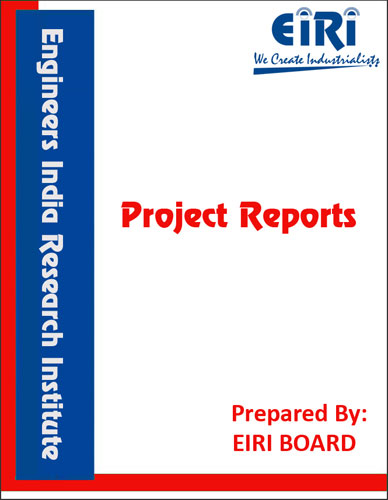POTASSIUM SULPHATE (Cap: 200 TPD)
The project report includes Present Market Position and Expected Future Demand, Market Size, Statistics, Trends, SWOT Analysis and Forecasts. Report provides a comprehensive analysis from industry covering detailed reporting and evaluates the position of the industry by providing insights to the SWOT analysis of the industry.
We can prepare PROJECT REPORT as per your INVESTMENT PLAN for BANK LOAN REQUIREMENT and INDUSTRY ANALYSIS. All reports are prepared by highly qualified consultants and verified by a panel of experts.
Have Query? Click Here to Chat
Industry Expert is Online, Chat with him for more detail.

Potassium sulfate (K2SO4) mineral name arcanite forms colorless, no hygroscopic crystal. It occasionally occurs in nature in the pure state in salt deposit, but is more widely found in the form of mineral double salts in combination with sulfates of calcium, magnesium, and sodium.
Potassium sulfate is after potassium chloride the most important potassium containing fertilizer being used mainly for special crops. Potassium sulfate constitutes 5% of the world demand for potash fertilizer.
Prior to 1939, the German potash industry was the chief source of potassium sulfate for American chemical and fertilizer industries, although considerable tonnages were being produced in this country by the interaction of potassium chloride and sulfuric acid as a side product of salt-cake manufacture. With the termination of European imports, the production of the salt was undertaken on a larger scale by the American Potash and Chemical Corp. through the interaction of burkeite (Na2CO3 2Na2SO4) with potassium chloride followed in turn by the successful recovery of this salt from langbeinite by the International Minerals and Chemical Corp. In agricultural use potassium sulfate is preferred for the tobacco crop of the Southeast and the citrus crop of Southern California.
Relatively small amounts of other potassium salts are used as fertiliser, generally for special purposes. Tobacco and some vegetables are adversely affected by high chloride concentration, and K2SO4 or KNO3 are preferred. K2SO4 is made in substantial quantities in Europe by the Mannheim process from potash and H2SO4 and in the united states and other countries by various exchange reacting between K, Na, and Mg salts.
• INTRODUCTION
• PROPERTIES AND STRUCTURE OF POTASSIUM SULPHATE
• B.I.S. SPECIFICATION
• USES AND APPLICATION
• MARKET SURVEY
• IMPORT AND EXPORT DATA OF POTASSIUM SULPHATE
• GLOBAL MARKET POSITION OF POTASSIUM SULPHATE
• PRESENT MANUFACTURERS OF POTASSIUM SULPHATE
• RAW MATERIALS
• MANUFACTURING PROCESS OF POTASSIUM SULPHATE
• PROCESS FLOW SHEET FOR POTASSIUM SULPHATE AND
HYDROCHLORIC ACID MANUFACTURING
• DIFFERENT PROCESSES TO MANUFACTURE SULPHATE OF POTASH
• MANUFACTURING PROCESS OF POTASSIUM SULPHATE
FROM SODIUM SULPHATE
• RECOVERY OF POTASSIUM SULFATE FROM NATURAL COMPLEX SALTE
• SUPPLIERS OF RAW MATERIALS
• SUPPLIERS OF PLANT AND MACHINERY
• SUPPLIERS OF PLANT AND MACHINERY (IMPORTED)
• PLANT LAYOUT
• PRINCIPLES OF PLANT LAYOUT
• PLANT LOCATION FACTORS
• EXPLANATION OF TERMS USED IN THE PROJECT REPORT
• PROJECT IMPLEMENTATION SCHEDULES
APPENDIX – A :
1. COST OF PLANT ECONOMICS
2. LAND & BUILDING
3. PLANT AND MACHINERY
4. FIXED CAPITAL INVESTMENT
5. RAW MATERIAL
6. SALARY AND WAGES
7. UTILITIES AND OVERHEADS
8. TOTAL WORKING CAPITAL
9. COST OF PRODUCTION
10. PROFITABILITY ANALYSIS
11. BREAK EVEN POINT
12. RESOURCES OF FINANCE
13. INTEREST CHART
14. DEPRECIATION CHART
15. CASH FLOW STATEMENT
16. PROJECTED BALANCE SHEET



